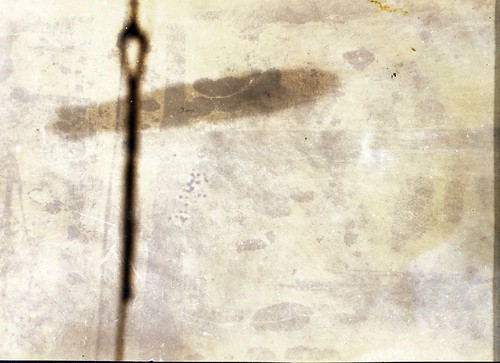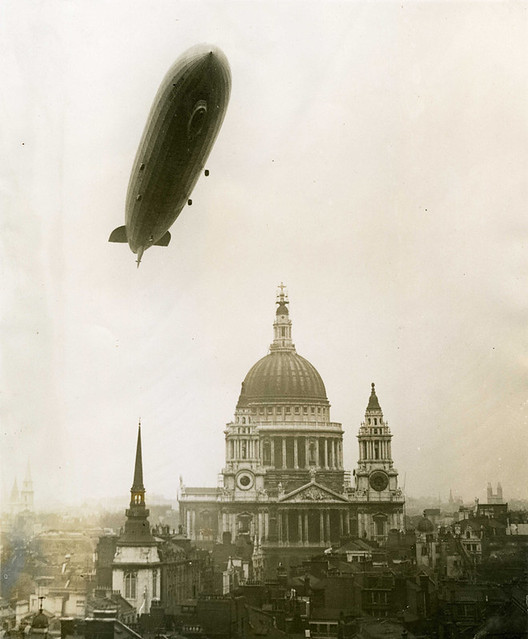The same thing
by Steve

I spend too much time looking at commons images. The images you can use and share without worrying about copyright or payment. They can improve a piece of writing and can sometimes offer an inspiration. They are generally one of the internet’s better rabbit holes, a glimpse into the past but also an alternate history, a motley collection of professional and amateur photography, strange illustrations from stranger books, carvings, engravings, lithographs, screengrabs. A world once there, a world gone, a world never known about.
They are memories and yet they are not my own, so they feel safe to explore. I’ve started reading W.G. Sebald’s Vertigo. There is an oft-quoted passage about images and memory:
It was a severe disappointment, Beyle writes, when some years ago, looking through old papers, he came across an engraving entitled Prospetto d’Ivrea and was obliged to concede that his recollected picture of the town in the evening sun was nothing but a copy of that very engraving. This being so, Beyle’s advice is not to purchase engravings of fine views and prospects seen on one’s travels, since before very long they will displace our memories completely, indeed one might say they destroy them. For instance, he could no longer recall the wonderful Sistine Madonna he had seen in Dresden, try as he might, because Müller’s engraving after it had become superimposed in his mind; the wretched pastels by Mengs in the same gallery, on the other hand, of which he had never set eyes on a copy, remained before him as clear as when he first saw them.
This captures perfectly the fear of old photographs. I don’t want my memory to be a memory of a photograph. So there is safety in the photographs of others, memories I never had and never will, beyond the memory of the image – that is a deal I agreed to.

So, back to the commons images, the images without owners, or at least not owned by me, so without memory. I was struck by the photograph of a zeppelin over London, steering its way over St Paul’s. I was taken by the incongruity. I have seen photographs of zeppelins. I walk past St Paul’s every working day. And yet to see both seemed odd, uncanny, unsettling. There is a fear in the skies, something obvious, not insidious or implied or hard to define like our fears might be now.
I saw the date, 1930. This was even more unsettling. And then I read around. This was the age of the zeppelin as the symbol of luxury. This was a German zeppelin flying over London promoting decadence rather than destruction. Suddenly the image made more sense, but was still just as unsettling. The money above, and the grime and dirt of the buildings below. But also, the reality below and the dream above.
Now when I walk past St Paul’s I’m not sure what I see. But the old church remains and I am glad that it anchors London in its history, in what it was and what it might be.
Photographs offer a moment in time. Teju Cole’s recent article in the New York Times discusses photography that goes beyond that. He explores the world of timed photographic studies, of taking photos of the same thing over a period of time be that hours, days, years.
Looking at such a series confirms that when you make one photograph and, some time later, make another of the same thing, what is inside the frame changes. With the passage of time, you no longer have “the same thing.”
I have stumbled into this sort of approach myself, albeit in a very, very amateur way. I find the subtle shifts in light, positioning, subject matter fascinating. I think it tells us so much more than one photograph ever could, even if what exactly it is telling us isn’t immediately clear. It makes us engage with the subject matter and the process of photography more fully. It is a marking of time, but also an ownership of time. It doesn’t let one single image dissolve into nostalgia, It doesn’t let one single image replace our memory. But in that marking of time it makes each of those moments, those exposures, feel a longer way away. What was it then. What was I then.
St Paul’s has been captured more than most. Just a few years later and zeppelins were no longer flying over London, but neither was luxury, and St Paul’s was emerging from the smoke and fire, the death and disaster.
I have a vague childhood memory of being at a Saturday morning club, or a special lesson at school, I’m not entirely sure. The visitor showed us that photograph. He told us that the photograph was credited to a well-known photographer, but that he, our humble guest, actually took this photograph. They were both on the rooftops, firewatching. He was just accompanying the photographer. Observing the photography, but more than that seeing what was happening to the City, keeping an eye out for fires in the area, to raise the alarm. The photographer had to fetch something but told him “You keep shooting”. And he did. And there was the photograph.
I’m not sure if I remember the story right. Or if it even happened. The storytelling or the story. I think about looking it up, but I’m fearful what I’ll find. Will I end up just remembering the proverbial engraving? But is that really the same? Shouldn’t I seek out the truth? I’m not sure if I can. What and who can you trust?
I fail to find anything to corroborate the story from that visitor that day. That visitor I may have imagined. Or maybe I didn’t imagine him, but maybe I imagined the story. Or maybe not. I feel relieved in a funny way that it isn’t resolved either way. The memory remains.
However, I do find out that it is believed that the image had been retouched, altered before it was published. There are now many layers to the image. What happened. Who took the shot. Who changed the photograph. Who discovered the changes. Who remembered the story of the uncredited photographer, or if he even existed. The truth isn’t straightforward. The camera might lie.
I also remember being told the firefighters trained their jets on St Paul’s and away from all the other nearby buildings. They were preserving future images. I walk past the buildings near St Paul’s now and see not much else survived. I find another photograph, credited to the same photographer of the famous St Paul’s shot. It was taken the next year, from St Paul’s itself.

The view is very different. The importance of perspective.
So, from the zeppelin in 1930 to the Blitz in 1940 and now back to 1915. A zeppelin not flying in peace this time. Raids in September, including bombs leading to huge fires at textile warehouses north of St Paul’s. The German directive back then was to avoid historic landmarks, but considering the lack of accuracy of zeppelin raids St Paul’s did well to escape.
Around this time D.H. Lawrence wrote to Lady Ottoline Morrell:
I cannot get over it, that the moon is not Queen of the sky by night, and the stars the lesser lights. It seems the Zeppelin is in the zenith of the night, golden like a moon, having taken control of the sky; and the bursting shells are the lesser lights.

The artist John Fraser painted a raid. Fraser was primarily a maritime painter, yet was compelled to record this modern, urban scene. I can understand why. The engravings, photographs, paintings, representations can betray our memories. They can distort them. But sometimes they are vital and unavoidable if we are to remember. We must try to reconcile ourselves to the power of the image and the fragility of our memories, acknowledging the former while doing whatever we can to preserve the latter. But back to Sebald:
…even when the images supplied by memory are true to life one can place little confidence in them.
It is an unsettling thought. And so it is easy to disagree, and agreeing feels like some sort of letting go of our memories. I think our memories are stronger than that. The details may be wrong, the perspective a little off, the date mixed up. But I think we can hold on to the essence of what happened, some inner truth in an event or an exchange. The image only tells us so much. And the image is but one moment, with plenty more before and plenty more after.

And plenty more to come. The recurrence of images. I understand Vertigo will end with Sebald covering the Great Fire of London – the end of the last St Paul’s Cathedral, and the genesis of the current one.
Every time I walk past St Paul’s, from early in the morning to late at night, there is somebody outside taking a photograph. You can see how landmarks can become more image than place. They are viewed via screens, viewfinders, selfie sticks. The memory is more of the creation of the image than the engagement with the place. However, from thinking about some of those previous images of St Paul’s, I don’t think that is a modern phenomenon.
It is funny standing outside St Paul’s, seeing the photographs being taken, maybe taking one yourself. You soon realise that it is actually one of the worst places to see the cathedral. The angles are all wrong. You cannot capture the whole building. You cannot properly make out the dome. It is too close to fully experience the place. It is only as you walk away that you can take it all in, get a better image, a more lasting memory. Sometimes you just need a little distance.
- Zeppelin from SDASM archives, via Flickr
- Zeppelin over St Paul’s from the National Archive UK, via Flickr
- St Paul’s Survives by Herbert Mason
- View from St Paul’s Cathedral after the Blitz by Herbert Mason
- A Zeppelin Raid by John Fraser
- Great Fire of London by unknown artist


This is a really lovely post. I seemed to remember running into Teju Cole about a year ago, and I thought I had a brief conversation with him about D.H. Lawrence (both of whom are mentioned here.) I had to scroll through my Facebook page to confirm that I actually went to the book reading. Photographs may distort our memories, but Facebook check-ins never do.
LikeLike